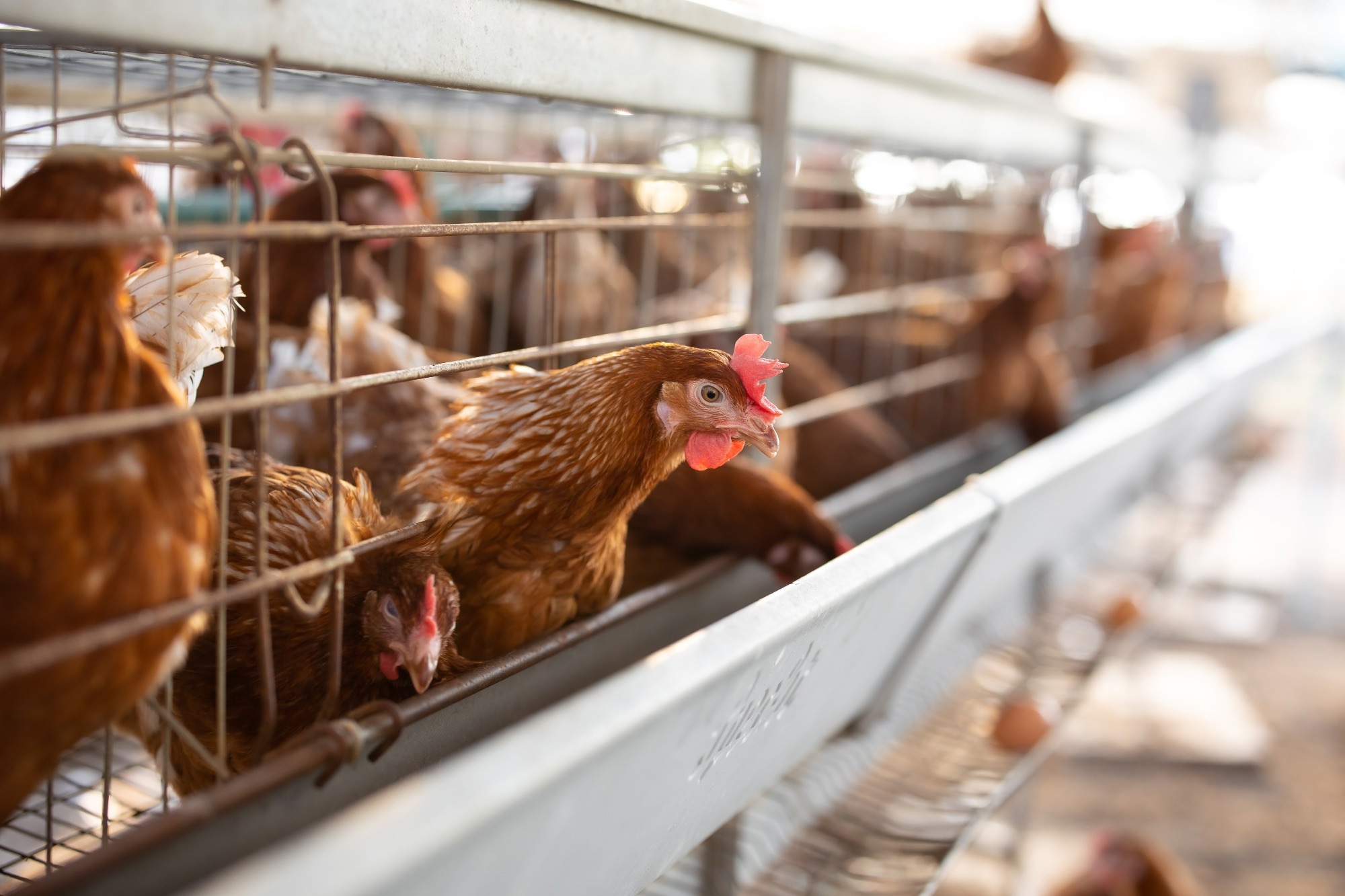In a recent article published in Eurosurveillance, researchers presented serological evidence of highly pathogenic avian influenza (HPAI) H5N1 virus infection in a pet cat and five dogs on a rural poultry farm in Italy.
 Study: Asymptomatic infection with clade 2.3.4.4b highly pathogenic avian influenza A(H5N1) in carnivore pets, Italy, April 2023. Image Credit: KHON SUPAN/Shutterstock.com
Study: Asymptomatic infection with clade 2.3.4.4b highly pathogenic avian influenza A(H5N1) in carnivore pets, Italy, April 2023. Image Credit: KHON SUPAN/Shutterstock.com
About the infecting virus
This virus first infected hens on the same farm. When Italian authorities quarantined the farm due to suspicion of an avian influenza outbreak, this farm had 22 poultry animals: two chicken hens, eight ducks, two geese, and ten chicks.
They noted that 16 of 18 hens on the farm died. However, the pet dogs/cat did not show any clinical symptoms of HPAI infection.
Reassortment events within the black-headed gulls-adapted H13 subtype gave rise to the HPAI H5N1 BB genotype in Europe in May 2022. By January 2023, it spread widely in black-headed gulls in northern Italy, causing mass mortality around Lake Garda.
This genotype also caused seven outbreaks on commercial farms in the Veneto and Emilia Romagna regions. Given its spread among wild birds in the area surrounding the farm, surveyors anticipated detecting the virus as the farm was around 10 km south of Lake Garda.
Sampling for virological and serological investigations
At the time of the first sampling, i.e., 17 April 2023, surveyors collected nasal swab samples from 10 people, including the owner and his five family members, three veterinarians, and one worker who did bird culling and corpse disposal.
The second sampling took place six to nine months later. They sampled the dog twice, though only collected blood samples, and the cat once.
Further, the researchers used a real-time reverse transcription-polymerase chain reaction (RT-PCR) targeting the M gene of AIV to test tracheal and cloacal swab samples of humans and birds.
They analyzed samples testing positive in this test using two other RT-PCRs directed towards the H5 and H7 genomes and neuraminidase subtype and H5 pathotype. Only hen samples tested positive for AIV, whereas human, duck, and goose samples tested negative.
Further, the team performed whole genome sequencing of one positive sample derived from hens. Next, they aligned these genomic sequences to closely related sequences from the global initiative on sharing all influenza data (GISAID) database identified via BLAST search, which revealed that the infecting virus belonged to genotype BB, clade 2.3.4.4b.
Molecular analysis uncovered an atypical mutation, T271A, in viral protein PB2, which suggested this virus adapted to infect mammals. Notably, this mutation has never been detected in clade 2.3.4.4b H5Nx viruses affecting birds in Europe since 2020 but was responsible for an outbreak in minks (a mammalian species) in Spain.
This observation raises the possibility that this virus might have spread from mammals to birds.
The team used a suite of enzyme-linked immunosorbent assays (ELISAs) to test dog and cat sera, with all assays directed towards monoclonal antibodies (mAbs) against nucleoprotein type A (NPA), neuraminidases N1, N2, N3 and N7, as well as hemagglutinins H5, H7.
The team confirmed the presence and specificity of H5 mAbs using the hemagglutination inhibition (HI) test and by microneutralization (MN) assay based on HPAI-H5N1 and LPAI-H5N3 viruses.
These serological tests detected mAbs against NPA, H5, and N1 in dogs and the cat sera at both sampling timepoints. Further analysis revealed sera from all animals except one dog tested positive in HI assay for the H5N1 Gull/23 virus. In the MN assay, sera from all animals were positive for the same strain, albeit with higher titers.
The pet animals recording the highest HI and MN titers against the Gull/23 virus also scored higher neutralizing titers in the MN assay directed towards the Mal/08 virus.
Finally, the team tested human sera using the same H5-EL competitive ELISA used for pets but a modified MN assay to test the pet sera. The test results confirmed all 10 humans were asymptomatic.
Conclusion
The current study presented serological evidence of HPAI H5N1 virus infection in five dogs and one cat on a poultry farm in Italy, highlighting the significance of genetic surveillance for early detection of avian viruses adapting rapidly to infect mammals with increased zoonotic potential.
More importantly, whole genomic sequencing of these viruses is needed to identify gene mutations correlated with these adaptations.